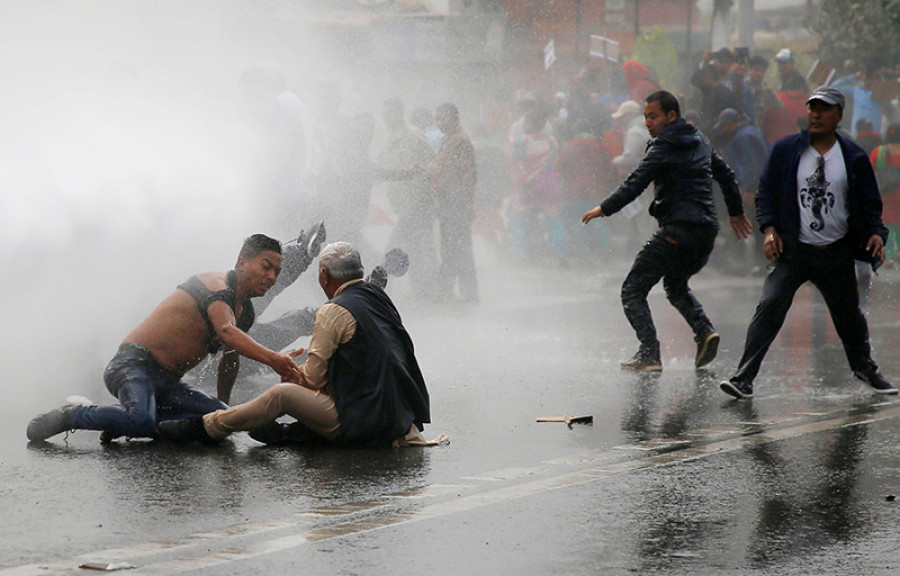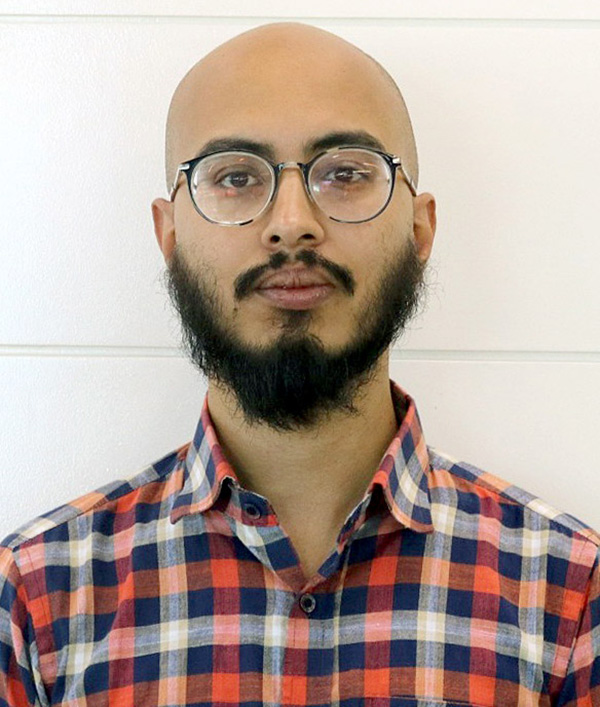Miscellaneous
Wide roads do not A Great city make
Two weeks ago, Kathmandu’s streets turned once again into a battleground between those asserting power and those challenging it. This time, Newar activists and homeowners went up against the might of the burgeoning neoliberal state.
Pranaya SJB Rana
Two weeks ago, Kathmandu’s streets turned once again into a battleground between those asserting power and those challenging it. This time, Newar activists and homeowners went up against the might of the burgeoning neoliberal state.
The protests concerned the road expansion set in motion by Baburam Bhattarai in 2011. Those opposed claimed that the widening of roads would decimate Newar heritage and centuries-old communities while the state claimed that the city needed roads.
And so, protesting elderly men and women were met with batons and jets of water from tank-like apparatuses wielded by stony-faced riot police. For a week, these protests held the collective imagination of Kathmandu, as debates raged on both sides, for and against. Now, met with a fierce clampdown, the protests have died down.
As it happens with most who dare to oppose the bulldozer of progress, protestors are branded ‘anti-development’ and chastised for plotting to keep Kathmandu in the annals of the under-developed.
They are accused of being money-grubbing opportunists. It has happened before, perhaps most notoriously with those who shut down the Arun III hydropower project in the 90s. But as with Arun III, ‘progress’ is a juggernaut; it can rarely be stopped once it has built enough momentum.
This protest was but one symptom of a much larger malaise that has afflicted Kathmandu. The disease here is neoliberalism and it is turning Kathmandu into a post-political city. For the geographer Erik Swyngedouw, drawing heavily from philosopher Jacques Ranciere, the post-political is an explicitly urban phenomenon characterised by the development of an order of ‘consensus’.
The post-political order focuses on urban regeneration schemes, like road expansion, that are couched in the language of economic growth, competitiveness, efficiency and state entrepreneurship. A seeming consensus is reached, that this—economic growth, competitiveness, efficiency and entrepreneurship—is what everyone in the city desires. The only room for debate now lies in the how—how do we achieve these goals?
In the post-political order, the state takes a more managerial role, delegating critical state functions to NGOs and civil society organisations. Tellingly, I/NGOs arguably provide more services and amenities in Nepal than the government does.
While European cities shifted from a welfare-centred Keynesian state to a more entrepreneurial neoliberal one, cities like Kathmandu went straight from a kleptocratic, oligarchic state to a profoundly neoliberal one. Even in the road expansion, one only needs to look at the role of the Nepal Army to see how governance is no longer only the province of the government.
Another telling symptom of the post-political order is the rise of the populist. There are several indicators of what entail populism. Among them are a homogenising of the city and the people where ‘everyone’ desires the kind of progress that the populist champions do; there is a marked rise in xenophobia since the populist aims at the ‘other’ as the chief cause of all the nation’s ills, masking the system’s own inequalities; the role of elites—the smart, educated, upper and upper-middle class—becomes paramount as they are seen as the drivers of change; populism is also oddly specific in its goals as it provides a seemingly concrete solution for all to latch on to; and finally, the people always know best and hence, populism can only arise in a democracy.
It is now a simple exercise to see how many of these indicators politicians like KP Oli (and most others who are also cut from the same cloth) check off. If you will follow me: ‘The people want progress and development, but Nepal is hamstrung by India and its meddling. It is not Nepal and Nepali politicians who are to blame for this sorry state of affairs but India, the intruder.
The solution is simple: get closer to China in a balancing act.’And of course, politicians like Oli are primed to undertake these actions because they were voted into power. Just like the constitution, which was passed by a majority. The people always know best.
This is the post-political order. It is ‘post’ politics because the polis, in its ideal Greek sense of the term, was a space of debate and often radical dissent, one where it was possible for the citizen to become a political subject. The exercise of true politics has thus been shunted to the margins and those opposed to the way things are being done are branded extremists and anti-nationals.
When in fact, protests like those by the Newar community are the epitome of politics. They are opposed to the state’s exercise of its distinctly urban power—the sharing out of space. The protestors refuse to acknowledge this delineating of space and in doing so, oppose the entire post-political consensual order.
They are saying no to the consensus that ‘development’ is what everyone wants. They do not want development at the cost of history and heritage. They do not want progress that destroys communities and neighbourhoods. They oppose consensus with dissensus.
What the state doesn’t seem—or is unwilling—to realise is that development doesn’t have to look like the United States. Wide roads do not make a great city. What makes a city is its people, and people come burdened with history and heritage. Urban life is what keeps cities alive and enjoyable. Part and parcel of urban life is politics and opposition.
A city is a multitude and there must always be space for dissent, even the radical kind. The post-political order privileges a few,but the city belongs to everyone.
Perhaps there is an alternative to the neoliberal manifesto of economic growth, competitiveness, efficiency and state entrepreneurship.
Wide roads pave the way to a progress that widens the gap between the rich and the poor, that further marginalises the have-nots, and leaves the state itself weakened and ineffective. Kathmandu does not need to ape another city.
It can protect its heritage and chart out a course of development that is not rapacious and exploitative. We can have roads that do not shear once-close communities in half. A road with a dedicated bus lane, a road with clearly marked bus stops, a road with pedestrian crossings every few hundred meters, a road with ample sidewalks on both sides, a road with chowks and squares, a vehicle-free road, a road with bicycle lanes.
These are all alternatives to the six or eight or ten lane highway that will be used mostly by private cars, that will be a pain to cross, that will kick up more dust and pollution, that will destroy more communities, that comes at the cost of heritage.
We are not yet too fargone.




 15.12°C Kathmandu
15.12°C Kathmandu










